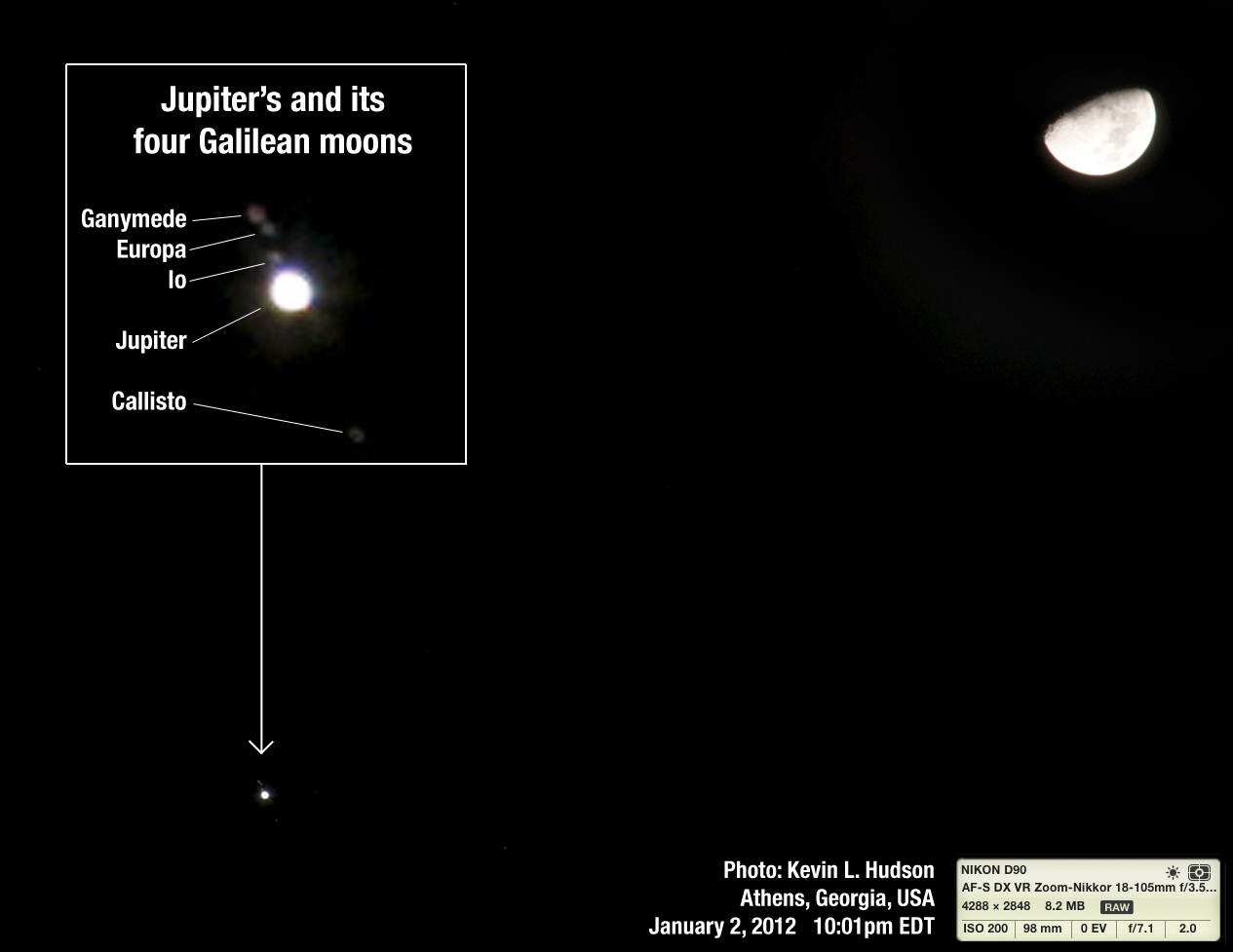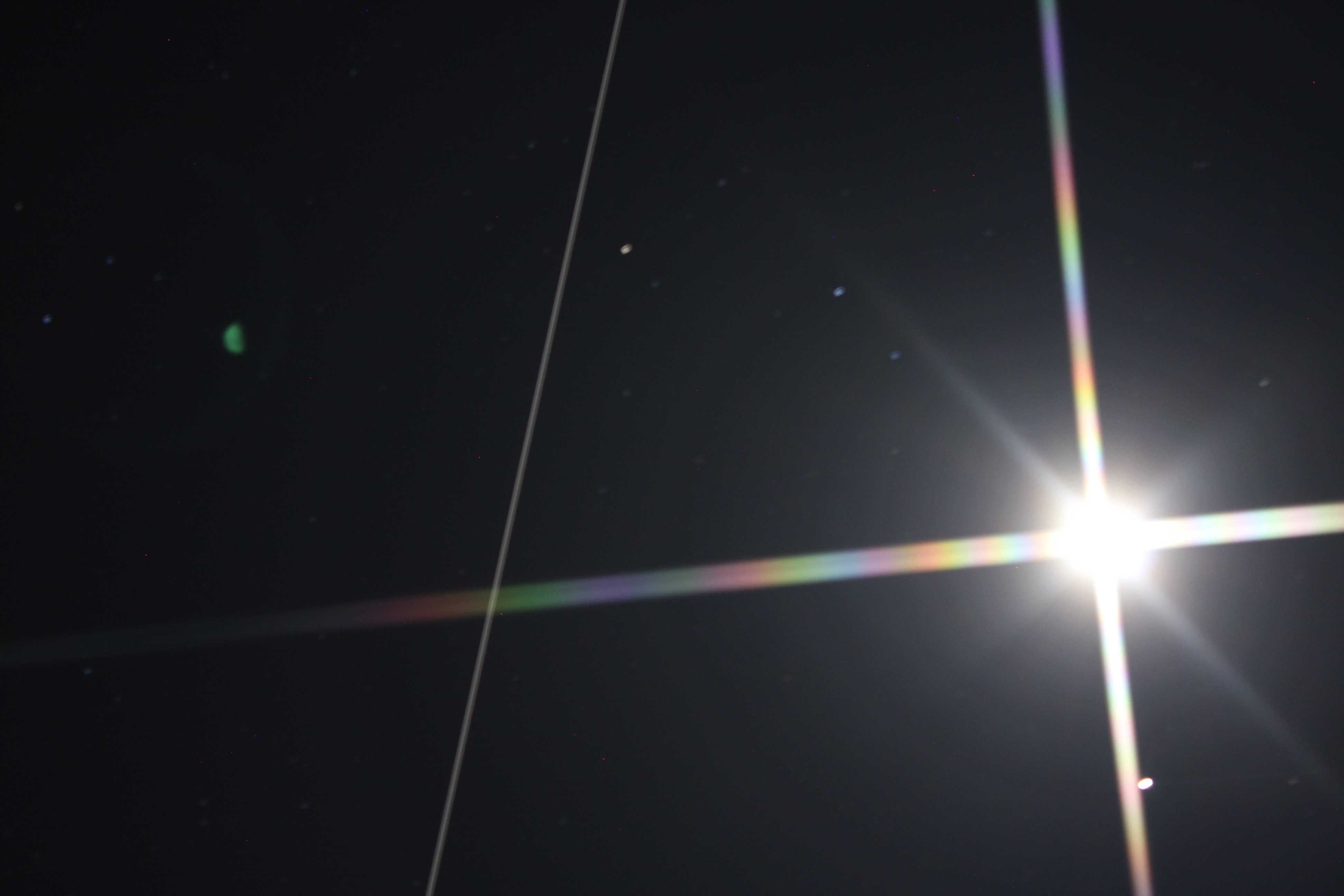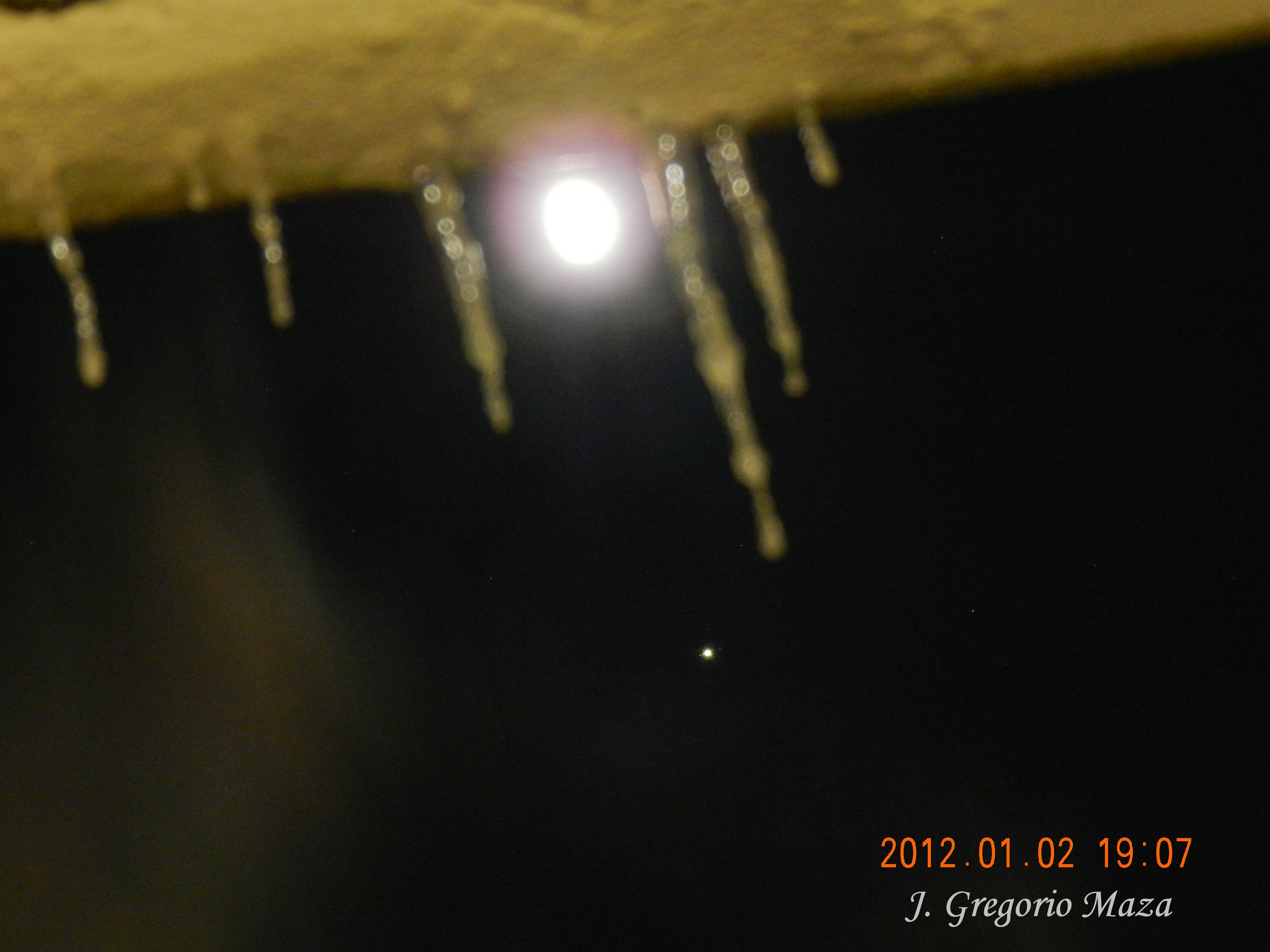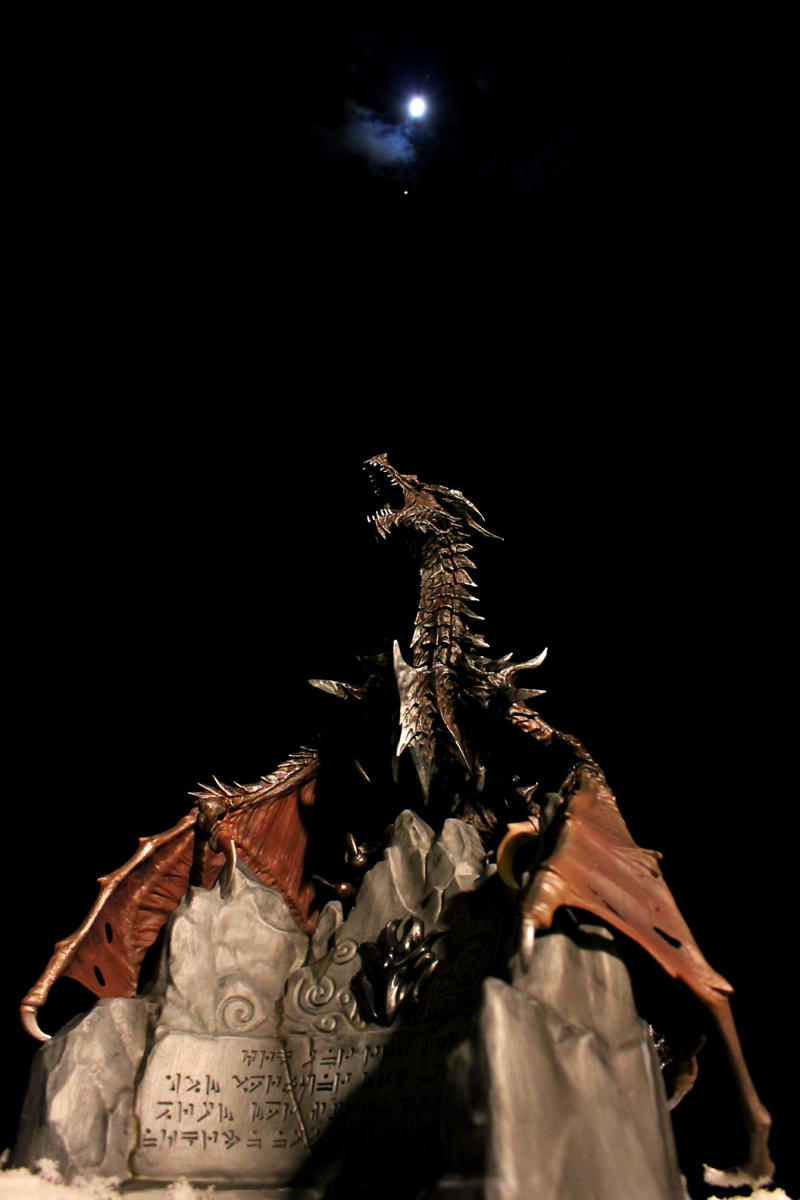Jupiter & the Moon Dazzle Skywatchers With Celestial Dance

The moon and Jupiter kicked off a new year of skywatching Monday night (Jan. 2) in a cosmic rendezvous that amazed skywatchers around the world.
During the celestial encounter, a skywatching sight known as a conjunction, the moon appeared just above Jupiter as the two objects moved across the nighttime sky. With Jupiter currently shining three times more brightly than the most luminous star in the night sky, the view was stupendous, skywatchers said.
"This [was] an amazing conjunction of the moon and Jupiter," observer Polina Bozhkova of Minsk, Belarus, told SPACE.com in an email.
Bozhkova's photos showed Jupiter and the moon in early evening, when the sky was still a darkening blue. [More skywatcher photos of Jupiter & the moon]

A celestial tango
Jupiter and the moon, which is in its gibbous phase, crept within about 5 degrees of each other as they crossed the night sky on Monday. For comparison, if you held out your arm and covered a patch of the sky with your fist, it would cover about 10 degrees.
Jupiter and the moon provided a real treat for skywatchers with good weather. In Ontario, Canada, skywatcher Greg Maza braved a chilly winter night to snap the amazing sight, despite the icicles hanging from his roof.
Get the Space.com Newsletter
Breaking space news, the latest updates on rocket launches, skywatching events and more!

"Icicles, snow, the moon, and Jupiter!" Maza wrote SPACE.com in an email. "Zoom into Jupiter and you can even see its moons and some stars around it."
And Maza wasn't the only one to see the moons of Jupiter.
"I was able to image our moon and all four of Jupiter's Galilean moons in a single image," wrote observer Kevin Hudson, who created a composite image to compensate for the brightness of the moon. Hudson said he used an off-the-shelf Nikon D-90 camera and lens to snap the view.
Other skywatchers timed their photos to coincide with an appearance of the International Space Station, creating long-exposure views that show the orbiting lab as a streak of light soaring 240 miles (386 kilometers) above Earth, with Jupiter and the moon shining in the background.
Still others took a more tongue-in-cheek, or "jovial," approach to photographing Jupiter and the moon. In State College, Pa., skywatcher Sam Hartman decorated his sky scene with a vicious dragon — actually a model of the fictional beast Alduin from the computer game "Skyrim."

In Hartman's photos, the dragon appears to roar skyward from a snow-covered perch as Jupiter and the moon shine overhead.
The view was worth waiting out the "passing clouds and some strong snow squalls" to snap the photos, Hartman told SPACE.com.
More planets and meteor shower delights
Jupiter and the moon aren't the only dazzling objects in the night sky this week. The bright planet Venus is making appearances in the evening sky just after sunset and can appear 3 1/2 times brighter than Jupiter.
And the sights don't stop there.
Tonight (Jan. 3) and early tomorrow, the annual Quadrantid meteor shower is peaking, promising up to 100 meteors an hour in the most optimum viewing conditions. The best time to see the meteor shower is at 2:30 a.m. EST on Jan. 4.
To see the Quadrantids, look to the northeastern sky at or after midnight, and be sure to bundle up against January's northern winter chill.
You can also watch the Quadrantid meteor shower online via this NASA website: http://www.nasa.gov/topics/solarsystem/features/watchtheskies/quadrantids_2012.html
Editor's note: If you snap an amazing photo of the Jupiter, the moon, the Quadrantid meteor shower or any other skywatching sight, and would like to share it with SPACE.com, contact managing editor Tariq Malik at tmalik@space.com.
You can follow SPACE.com Managing Editor Tariq Malik on Twitter @tariqjmalik. Follow SPACE.com for the latest in space science and exploration news on Twitter @Spacedotcom and on Facebook.
Join our Space Forums to keep talking space on the latest missions, night sky and more! And if you have a news tip, correction or comment, let us know at: community@space.com.

Tariq is the Editor-in-Chief of Space.com and joined the team in 2001, first as an intern and staff writer, and later as an editor. He covers human spaceflight, exploration and space science, as well as skywatching and entertainment. He became Space.com's Managing Editor in 2009 and Editor-in-Chief in 2019. Before joining Space.com, Tariq was a staff reporter for The Los Angeles Times covering education and city beats in La Habra, Fullerton and Huntington Beach. In October 2022, Tariq received the Harry Kolcum Award for excellence in space reporting from the National Space Club Florida Committee. He is also an Eagle Scout (yes, he has the Space Exploration merit badge) and went to Space Camp four times as a kid and a fifth time as an adult. He has journalism degrees from the University of Southern California and New York University. You can find Tariq at Space.com and as the co-host to the This Week In Space podcast with space historian Rod Pyle on the TWiT network. To see his latest project, you can follow Tariq on Twitter @tariqjmalik.









